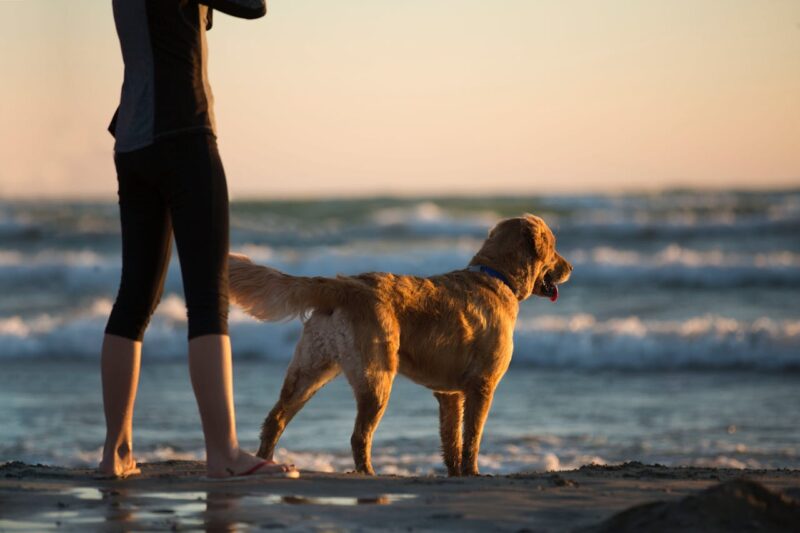 If you’re a dog owner in Whangārei or visiting the area with your four-legged friend, you’ll be pleased to know that we have some excellent beach options where dogs are welcome. However, there are important rules and seasonal restrictions you need to understand before heading out. This guide covers everything you need to know about taking your dog to beaches around Whangārei, from year-round dog-friendly spots to summer restrictions and banned areas.
If you’re a dog owner in Whangārei or visiting the area with your four-legged friend, you’ll be pleased to know that we have some excellent beach options where dogs are welcome. However, there are important rules and seasonal restrictions you need to understand before heading out. This guide covers everything you need to know about taking your dog to beaches around Whangārei, from year-round dog-friendly spots to summer restrictions and banned areas.
Summer Rules for Dogs on Whangarei Beaches
Many popular Whangarei beaches have restrictions for dogs during the summer holiday period. Between 20 December and 31 January each year, dogs are only allowed on most beaches before 9:00am or after 5:00pm. This restriction applies to nearly all beaches in the Whangārei District except for a few designated year-round dog areas.
The Whangārei District Council implemented these peak summer hours restrictions to ensure beaches remain safe and enjoyable for all visitors during the busiest period of the year. Many families with young children visit beaches during peak daylight hours, and the council decided it was appropriate to have dog-free periods during this time.
The good news is that many dog owners actually prefer these quieter times of day anyway. The sand is cooler for dogs’ paws in the early morning and late evening, and beaches are less crowded, making for a more pleasant walk. Just remember, if you’re heading to the beach between late December and the end of January, you’ll need to plan your visit for either early morning or evening.
For more information please visit Whangarei District Council Website
Year-Round Off-Leash Beaches
The Whangārei District has designated specific beaches where dogs can be off-leash all year round with no summer restrictions. These are your best options if you want reliable, any-time access for your dog.
Ruakākā Beach (Specific Section)
Ruakākā Beach is a long, white stretch of white sand beach that’s popular for walking, swimming, and general beach activities. The dog-friendly section is clearly marked, and you’ll often see other dog owners here, making it a good spot for social dogs who enjoy playing with others. The beach is patrolled by lifeguards during summer months in the main swimming areas, though the off-leash dog walking section is outside the lifeguard patrol zone. Beware of going too far north, as there is a protected area for endangered fairy terns at the end of the beach up to the estuary.
There’s parking available at various access points along Ruakākā Beach, and the facilities include public toilets right beside the surf lifeguard building in the carpark at the end of Ruakākā Beach Road. The beach is relatively flat and easy to access, making it suitable for dogs of all sizes and fitness levels. The long stretch of sand means there’s plenty of room for dogs to run and play. Don’t let your dogs go up into the sand dunes as they may disturb wildlife. See the dog ban section further down for other restrictions on dogs in this area.
Uretiti Beach
Uretiti Beach is another year-round dog-friendly option. Dogs are allowed off-leash on the beach and foreshore from the southern boundary of the Uretiti Beach DOC Campsite southward to the beach access point at Tip Road, and the northern boundary of the campsite up to Ruakākā Beach (see rues above). This gives you a good stretch of beach to explore with your dog any time of year.
Uretiti is part of the wider Bream Bay area and is a neighbour to Ruakākā beaches long expanses of white sand backed by sand dunes. The beach faces the Pacific Ocean and can have good surf at times, though there are also calmer sections suitable for swimming.
Dogs are banned from the DOC campsite right by Uretiti beach. The beach access at Tip Road provides a starting point for your visit, and from there you can walk north along the designated dog-friendly section. See the dog ban section further down for other restrictions on dogs in this area.
Be aware that Uretiti is also a popular nudist beach, so when you walk north from Tip Road, you will be entering the south side of Uretiti beach, which is customarily the “clothes optional” area. Please keep your dog under control and be respectful of others’ privacy.
One Tree Point
One Tree Point, also in the Bream Bay area approximately 35km (22 miles) south of Whangārei, has a designated off-leash foreshore area year-round. The dog-friendly zone runs from the Marsden Yacht Club south-eastward to the car park area and foreshore access opposite 189 One Tree Point Road.
This is more of a harbour and foreshore environment than an open ocean beach, which means generally calmer water conditions. The area is popular with locals who appreciate having a year-round spot close to home. The foreshore location means you’re walking along the water’s edge with views across the harbour rather than facing open ocean.
One Tree Point is a small community, so be respectful of residents when visiting. The area is more built-up than remote beaches, which means easier access but also more need for responsible dog ownership and keeping your dog under control.
Other Bream Bay Beaches
Beyond the year-round sections at Ruakaka and Uretiti, other parts of the Bream Bay coastline allow dogs during permitted times. This 22km (14-mile) stretch of white sand includes several access points and beach areas. The long, open beach is excellent for dogs who love to run, though be aware of surf conditions as this is an ocean-facing coastline.
Waipu Cove and Langs Beach are also part of this area and allow dogs outside the summer restricted hours. These beaches are patrolled by lifeguards during summer months in the main swimming areas, and it’s important to keep dogs away from the patrolled swimming zones and any areas with signage indicating restrictions.
Most Other Beaches: Restricted Times in Summer
Outside of the peak summer period (20 December to 31 January), dogs are allowed on most beaches in the Whangārei District at any time, provided they’re under control. During the summer restriction period, you can still visit these beaches with your dog, but only before 9:00am or after 5:00pm.
Tutukaka Coast Beaches
The Tutukaka Coast, about 30km (19 miles) northeast of Whangārei, has several beaches that allow dogs outside the restricted hours. However, you need to be aware that recent changes mean Matapōuri Bay now has specific restrictions. For the duration of the dotterel and oystercatcher breeding season (until 31 March), dogs must be on a leash on both sides of the estuary at Matapōuri Bay, including at the southern tip of the beach.
Other Tutukaka Coast beaches like Sandy Bay, Woolley’s Bay, and the inner harbour beaches along Tutukaka Block Road allow dogs during the permitted times. The Tutukaka Marina beach has year-round off-leash access according to recent bylaw changes, making it another good option in the area.
Ngunguru estuary foreshore also has year-round off-leash access, giving dog owners in this area good options for exercising their dogs near the water.
Whangārei Heads Beaches
The Whangārei Heads area, about 35km (22 miles) from central Whangārei, has several beaches where dogs are allowed during permitted times. McLeod’s Bay is a popular option because it combines beach access with convenient facilities, there’s a fish and chip shop nearby where you can grab takeaways and enjoy them at the picnic tables with your dog.
Ocean Beach at Whangārei Heads is a stunning surf beach, and dogs are allowed here. Just stay on the main beach. If you’ve climbed over the dune on the north end or the hill on the south end, you’ve gone too far. Other beaches in the Whangārei Heads area allowing dogs during permitted times, but always check current restrictions before visiting. Other beaches in the area allowing dogs are;
- Urquharts Bay
- McLeod Bay
- Taurikura Bay
- Reotahi Beach (but not into the reserve area at the south end)
- Little Munroe Bay
- McGregors Bay
DO NOT take your dog to Smuggler’s Bay (over the hill from Urquharts Bay), as this is part of the environmentally sensitive protected Bream Head Reserve.
Taiharuru Bay, reached by taking the road out to Taiharuru past the turn-off to Whangārei Heads, is a beautiful spot that’s often only frequented by locals. It has clear blue waters and rocky coastline to explore, and dogs are allowed during the standard permitted times.
Beaches Where Dogs Are Banned Year-Round
Some beaches and estuaries have permanent dog bans to protect endangered or recovering flora and fauna. These bans are in place year-round, not just during summer, and are critical for wildlife conservation.
Ngunguru Sandspit
The Ngunguru Sandspit is a rare coastal landscape with an unmodified sandspit that’s home to shorebirds and holds cultural, spiritual, and environmental significance. This is a protected area, and dogs are not allowed at any time. Access to the sandspit is by boat only, and visitors must leave dogs behind.
The sandspit is home to vulnerable shorebird species that nest in the dunes and along the shoreline. Dogs, even well-behaved ones, can disturb these birds, damage nests, and disrupt breeding. The year-round ban helps protect these important bird populations.
Other Protected Areas
The Whangārei District has 38 prohibited sites for dogs, usually coastal areas where wildlife is particularly vulnerable. These areas will be signposted, but it’s your responsibility to check before visiting any beach. The council’s online map shows all dog access rules across the district, and you should consult this before heading out with your dog. Not included in the maps below is Whale Bay and Matapōuri Reserve – on Matapōuri Reserve (including access track to Whale Bay) and Otito Reserve at the northern end of Matapōuri Bay.
Conservation areas, wildlife refuges, and sensitive ecological zones often have dog bans. These aren’t arbitrary rules, they’re essential for protecting native birds, marine mammals, and fragile coastal ecosystems. Respecting these bans helps ensure these species and environments survive for future generations.
Finding the Right Beach: Using Council Resources
The Whangārei District Council has provided an excellent maps showing dog access rules across the entire district. This interactive map is your best resource for checking whether a specific beach allows dogs, whether there are restrictions, and what the rules are.
The map is regularly updated to reflect current rules, seasonal restrictions, and any changes to dog access areas. Before visiting any beach with your dog, particularly if it’s somewhere you haven’t been before, check this map. It will save you disappointment and potential fines.
The council also provides PDF maps for specific areas like One Tree Point, Bream Bay, and Uretiti, which show the exact boundaries of dog-friendly zones. These can be downloaded and printed if you prefer to have a physical reference.
Responsible Dog Ownership at the Beach
 Having access to beaches with your dog is a privilege that depends on responsible ownership. The Whangārei District Council and the wider community expect dog owners to follow rules and show consideration for others. Here’s what you need to do:
Having access to beaches with your dog is a privilege that depends on responsible ownership. The Whangārei District Council and the wider community expect dog owners to follow rules and show consideration for others. Here’s what you need to do:
Always Carry a Leash
It’s a legal requirement to carry a leash when your dog is in any public place, including beaches. Even in off-leash areas, you must have a leash with you at all times. You need to be able to put your dog on a leash immediately if required, whether that’s to pass other people, bring your dog under control, or respond to any situation that arises.
Pick Up After Your Dog
This is non-negotiable. You must pick up and properly dispose of your dog’s faeces. Bring dog waste bags with you, carry the waste to a bin or take it home with you. Dog faeces on beaches is not only unpleasant for other users, it can also contaminate the environment and pose health risks.
Many beaches don’t have rubbish bins, so be prepared to carry waste bags with you until you find a disposal option. Some dog owners carry a sealed container in their vehicle specifically for this purpose.
Keep Dogs Away from Wildlife
Northland’s beaches are home to many native bird species, including dotterels, oystercatchers, and other shorebirds. These birds often nest in the dunes and along the high tide line. Dogs, even friendly ones just wanting to play, can destroy nests, kill chicks, and drive adult birds away from their eggs.
The Department of Conservation’s “Lead the Way” programme provides guidelines for responsible dog ownership around wildlife:
- Walk on the wet sand, staying away from dunes where birds nest
- Keep at least 20m (65 feet) distance from any coastal wildlife
- If you see birds on the beach, keep your dog close and consider putting them on a leash
- During breeding season (typically spring and summer), be extra cautious
- If you see signs indicating bird nesting areas, keep well away
Watch for Signs and Respect Boundaries
Beach areas often have signage indicating dog restrictions, off-leash zones, prohibited areas, and seasonal rules. Pay attention to these signs and follow them. Don’t assume that because you saw dogs somewhere last year, the rules haven’t changed. Wildlife protection measures can be put in place quickly when needed, as happened at Matapōuri with the temporary leash requirement during breeding season.
Keep Dogs Under Control
“Off-leash” doesn’t mean “out of control.” Your dog must be under effective control at all times, responding to your commands and not menacing or threatening other beach users. If your dog has poor recall, is aggressive toward other dogs or people, or can’t be reliably controlled, keep them on a leash regardless of whether it’s an off-leash area.
Be aware of other beach users. Not everyone likes dogs, and some people are genuinely afraid of them. Keep your dog away from people who appear uncomfortable, don’t let your dog jump on strangers, and call your dog away if they’re bothering others.
Water and Shade
Beach conditions can be harsh for dogs. Sand gets hot, especially dark sand, and can burn paws. The reflection of sun off sand and water increases heat exposure. Always bring fresh water and a bowl for your dog, shade isn’t always available on beaches, so consider bringing an umbrella or shade structure if you’re staying for extended periods.
Watch for signs of overheating in your dog: excessive panting, drooling, weakness, or unusual behaviour. If your dog shows these signs, get them to shade immediately, offer water, and consider cooling them down with wet towels.
Never Leave Dogs in Vehicles
Even on mild days, vehicles heat up quickly. The temperature inside a car can reach fatal levels within minutes, even with windows cracked open. If you’re visiting a beach, your dog should be with you on the beach, not left in the car. Many deaths occur each summer from dogs left in hot vehicles, don’t let your dog become a statistic.
Penalties for Breaking the Rules
Breaking dog control bylaws can result in significant fines. The Whangārei District Council can issue fines for:
- Having dogs on beaches during restricted hours (20 December to 31 January, between 9am and 5pm)
- Taking dogs to banned beach areas
- Not having your dog under effective control
- Not picking up dog faeces
- Not carrying a leash in public
Fines can range up to $3,000 for serious breaches under the Dog Control Act. The council takes these rules seriously because they protect both the community and important wildlife. Dog control officers patrol beaches, particularly during summer, and they will issue fines to owners breaking the rules.
Beyond fines, irresponsible dog ownership threatens access for all dog owners. If too many people break the rules, the council may respond by restricting dog access further. The current dog-friendly beaches and times exist because the majority of dog owners are responsible, let’s keep it that way.
Planning Your Beach Visit with Your Dog
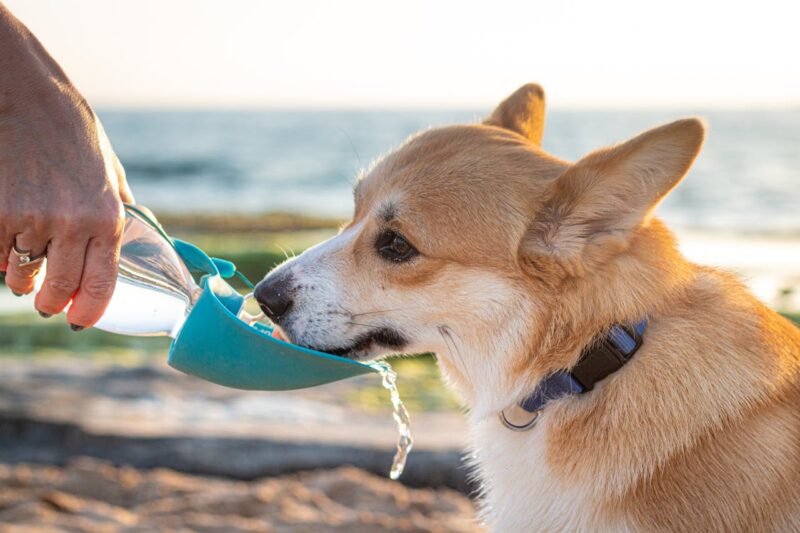
Here’s a practical checklist for a successful beach trip with your dog:
Before You Leave:
- Check the council’s online map to confirm the beach allows dogs
- Check the time, is it during permitted hours?
- Check the weather and tide times
- Pack water and a bowl, bring more than you think you’ll need
- Pack dog waste bags
- Make sure your dog’s leash is in good condition and packed
- Consider bringing a towel for drying your dog afterward
- Bring fresh water for rinsing salt off your dog if they swim
At the Beach:
- Arrive during permitted times (before 9am or after 5pm in summer)
- Look for signage about current restrictions
- Keep your leash accessible at all times
- Watch for other beach users and wildlife
- Keep your dog away from bird nesting areas and dunes
- Pick up immediately after your dog
- Ensure your dog has access to shade and fresh water
- Monitor your dog for signs of overheating or fatigue
After Your Visit:
- Dispose of dog waste properly
- Rinse salt water off your dog, salt can dry out their skin and coat
- Check your dog’s paws for cuts or burns
- Provide fresh water for your dog, beach activities are tiring
Local Dog Parks and Alternatives
 If beach access is restricted or you want other options for exercising your dog, Whangārei has several excellent dog parks and off-leash areas:
If beach access is restricted or you want other options for exercising your dog, Whangārei has several excellent dog parks and off-leash areas:
Whangārei Dog Park
Whangārei Dog Park is a purpose-built, fenced dog park at William Fraser Memorial Park on Pohe Island. This park is specifically designed for off-leash dog exercise and has space to run, balls to play with, agility obstacles, and water for drinking and cooling off. The fenced area means you can safely let your dog off-leash without worry about them running into traffic or disappearing.
Barge Showgrounds
Just out of town heading west, the Barge Showgrounds provide sprawling public green space where dogs are permitted off-leash except in the wetland areas. This gives dogs plenty of room to run and explore. The showgrounds host various events throughout the year, so check whether events are happening that might restrict dog access on particular days. There are often horses here, so ensure your dog is on a leash if horses are around.
Seasonal Considerations
Summer (December-February)
This is when the 9am-5pm restriction is in place on most beaches. Early morning beach walks are lovely, the sand is cool, beaches are quiet, and you’ll often see beautiful sunrises. Evening walks after 5pm give you the golden hour light and cooling temperatures.
Be extra cautious about overheating during summer. Even outside the hottest part of the day, sand can be hot and dogs can overheat quickly. Summer is also when beaches are busiest, so expect more people, even during permitted dog times.
Autumn (March-May)
Autumn is excellent for beach walks with dogs. The summer time restrictions end on 1 February, so you can visit beaches any time of day again. The weather is often still warm and settled, but beaches are much quieter. Water temperatures remain comfortable in early autumn.
Be aware that some bird species may still be nesting, particularly in early autumn, so continue to be cautious around dunes and any areas with signage about wildlife.
Winter (June-August)
Winter beach walks have their own charm. Beaches are quiet, the air is crisp, and you’ll often have long stretches of sand to yourselves. Some dogs love winter beach visits, while others aren’t as keen on cold, windy conditions.
Winter storms can create hazards on beaches, fallen trees, debris, and rough seas. Be cautious and stay well back from the water, waves can be unpredictable and dangerous.
Spring (September-November)
Spring is a beautiful time for beach visits as the weather warms up. However, this is also prime bird nesting season. Many coastal birds breed in spring and early summer, so be extra vigilant about keeping dogs away from dunes and areas where birds are nesting.
Watch for increased signage about bird protection during spring, and expect possible temporary restrictions in areas where threatened species are nesting.
Special Circumstances and Considerations
Dogs with Limited Mobility or Older Dogs
Beaches with easy access are better for dogs with mobility issues. Ruakākā and One Tree Point have relatively flat, easy access compared to beaches requiring walks through bush tracks or over dunes. The calmer harbour and foreshore environments at One Tree Point may also be easier for older dogs than beaches with big surf.
Consider the distance to the water and whether your dog can manage walking on sand, which is more tiring than firm ground. Shorter visits during cooler parts of the day may be better for older or less fit dogs.
Puppies and First Beach Visits
Introduce puppies to beaches gradually. The sounds, smells, and environment can be overwhelming for young dogs. Choose quieter times and locations for first visits. Make sure your puppy is fully vaccinated before visiting public beaches, as diseases can be transmitted through contact with other dogs or their faeces.
Reactive or Nervous Dogs
If your dog is reactive to other dogs or nervous around people, beach visits require careful management. Visit during the quietest times, early morning on weekdays is usually best. Choose larger beaches where you can maintain distance from others. Keep your dog on a leash until you’re confident about the environment and other dogs present.
Consider working with a qualified dog trainer if your dog’s reactivity makes public beach visits difficult. Many dogs can improve their behaviour with proper training and management.
Finally…
Whangārei and the surrounding Northland region offer excellent beach options for dog owners who are willing to follow the rules and be responsible. The year-round off-leash beaches at Ruakākā, Uretiti, and One Tree Point provide reliable access throughout the year, while most other beaches allow dogs during permitted times outside the peak summer period.
The key to maintaining and potentially expanding dog access to beaches is responsible ownership. Pick up after your dog, keep them under control, respect wildlife and other beach users, and follow the rules about restricted times and banned areas. These aren’t arbitrary rules, they exist to protect wildlife, ensure beaches remain safe and pleasant for everyone, and allow dogs continued access to these beautiful coastal spaces.
Check the council’s online resources before visiting any beach, pay attention to signage, and plan your visits during permitted times. With a bit of preparation and responsible behaviour, you and your dog can enjoy many wonderful beach adventures around Whangārei.
Remember, the privilege of taking dogs to beaches depends on the responsible behaviour of all dog owners. Let’s work together to ensure our dogs can continue to enjoy Northland’s beautiful coastline for years to come.
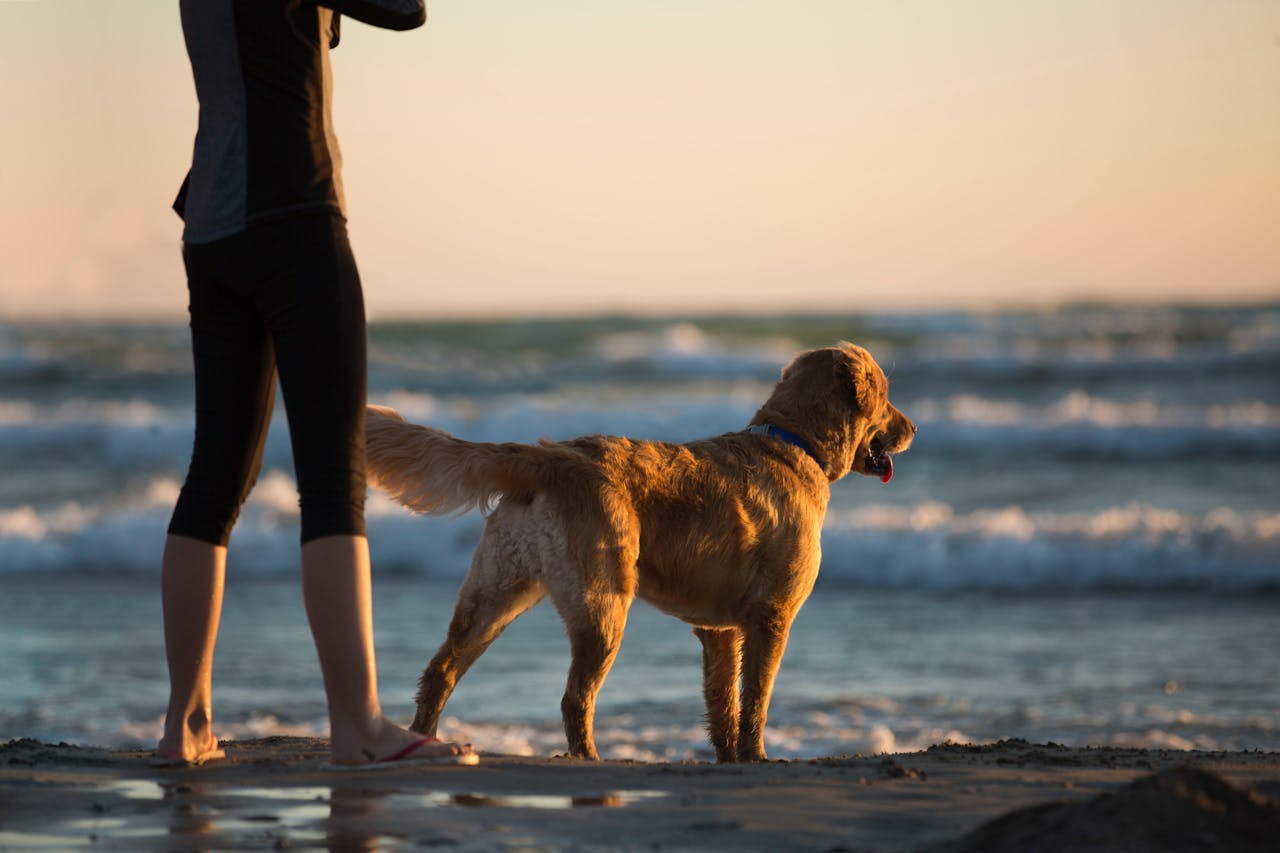
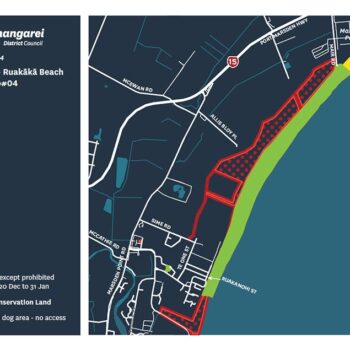
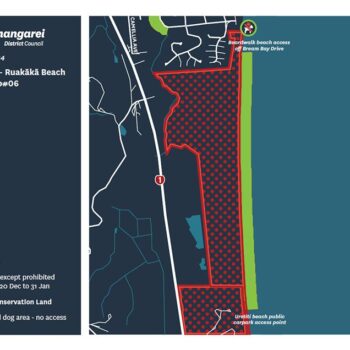
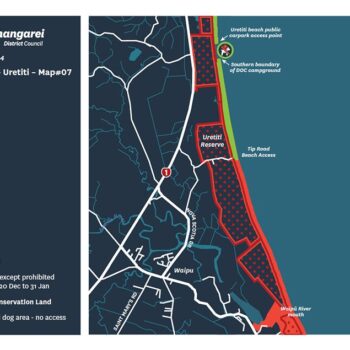
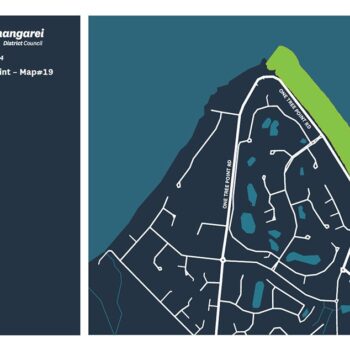
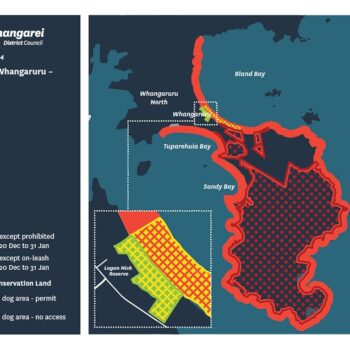
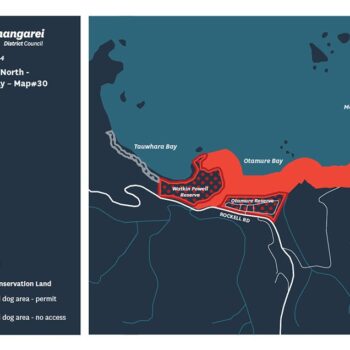
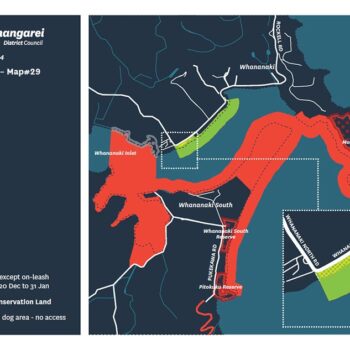
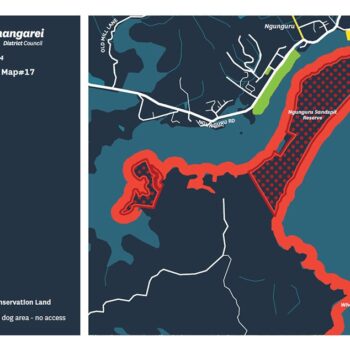
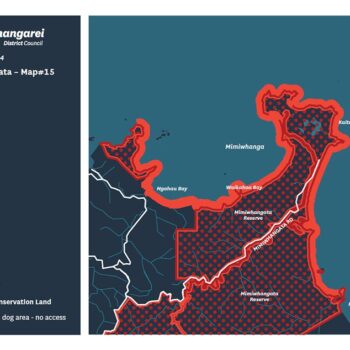
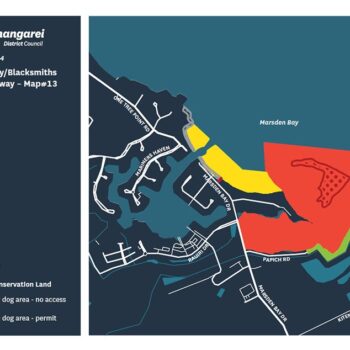
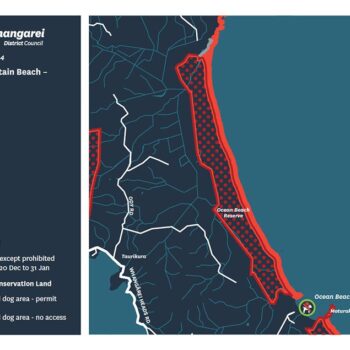
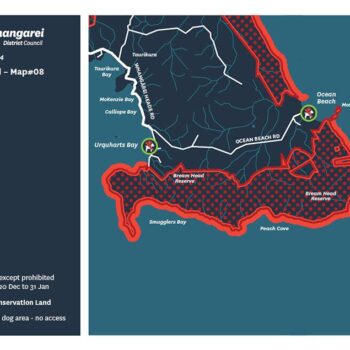
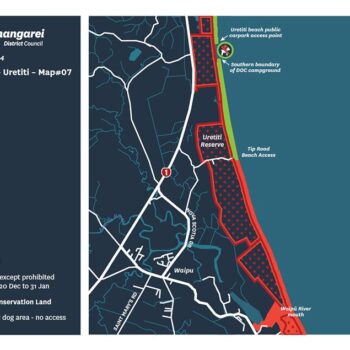
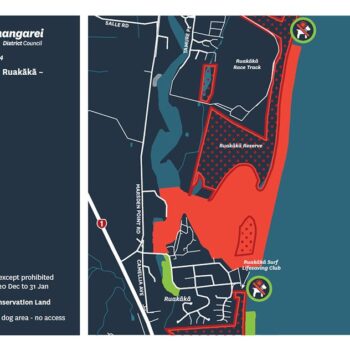


Leave a Reply
You must be logged in to post a comment.